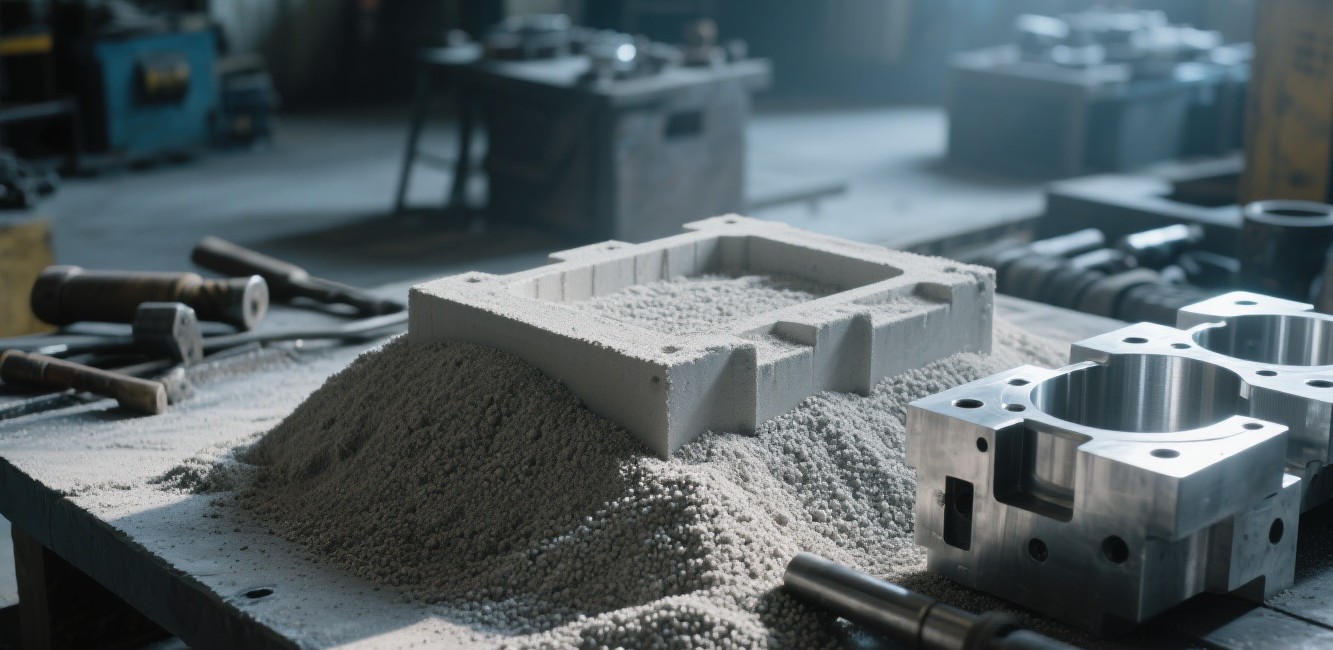In the ever-evolving world of heavy industry, the demand for high-performance wear components continues to rise. Whether in mining, construction, or energy production, machinery must operate under intense pressure and harsh conditions. At the heart of this reliability lies the quality of the parts themselves — and casting technology plays a crucial role in determining that quality.
One technology that stands out in modern wear parts foundries is Resin Sand Casting. Known for its precision and consistency, this method has become an essential part of manufacturing high-end wear parts, including those produced by HAITIAN Heavy Industry. 
Resin sand casting, also known as no-bake sand casting, is a process where sand is bonded with a resin-based adhesive to form strong, reusable molds. Unlike traditional green sand methods, which rely on clay and water, resin sand molds offer significantly improved dimensional stability and surface quality.
This makes it ideal for casting complex, large-scale wear components that demand both strength and accuracy.
1. Superior Surface Finish
Resin sand molds create a much smoother internal mold surface, which translates to cleaner castings with minimal surface defects. This reduces the need for post-processing and machining.
2. High Dimensional Accuracy
Resin bonding provides a stable mold structure during the pouring process, resulting in more precise dimensions and tighter tolerances. This is especially important for critical wear-resistant parts used in heavy machinery and mining equipment.
3. Minimized Casting Defects
Thanks to its better gas permeability and strong mold integrity, resin sand casting significantly reduces issues like:
Porosity
Slag inclusion
Misruns
This results in more consistent quality and fewer rejected parts, which ultimately saves time and cost.
4. Flexible for Complex Shapes
The strength and stability of resin-bonded sand allow for complex geometries, making it suitable for custom designs and intricate internal structures that might be difficult with traditional casting methods.
Although the resin sand casting process has the advantages of high dimensional accuracy and good surface quality, its production cost is significantly higher than that of traditional clay sand casting and water glass sand casting. This is mainly due to the need to configure a set of modern production facilities such as sand mixing equipment, sand regeneration system and tail gas treatment device. At the same time, the process has extremely strict requirements on the quality of raw materials, and high-purity silica sand and specific types of resin binders must be used.
The main raw materials used in the resin sand casting process include: selected silica sand (SiO2 content ≥ 98%, uniform particle size distribution), furan resin binder (the amount added is generally 1.0-2.5% of the sand weight), acid curing agent (such as p-toluenesulfonic acid solution) and auxiliary additives such as silane coupling agent. These raw materials need to be mixed according to strict ratios, and the addition ratio of resin and curing agent needs to be adjusted in real time according to the ambient temperature and humidity to ensure that the sand mold obtains the best working performance and curing effect.
At HAITIAN Heavy Industry, quality is never an afterthought — it is the foundation of every product. That’s why HAITIAN has adopted resin sand casting technology in the production of its mining wear parts.
By using this advanced method, HAITIAN is able to produce components with:
Smoother surfaces for reduced wear and better fitting
Tighter tolerances to meet demanding industrial standards
Fewer internal defects, ensuring long-lasting performance even in high-stress mining environments
Whether it’s a cone crusher liner or a mill liner, each part benefits from the strength, stability, and quality provided by resin sand casting.
Resin sand casting represents more than just a manufacturing technique — it reflects a broader trend in the industry toward precision, reliability, and efficiency. As companies like HAITIAN continue to invest in modern casting methods, customers can expect longer service life, better performance, and lower maintenance costs from their critical wear components.
For industries where downtime is expensive and durability is non-negotiable, resin sand casting offers a powerful solution.